8.3 Making Sense of Religion
Now that we understand the landscape of religion and spirituality, we can begin to explore the why of religion. Sociologists answer this question in different ways. Some sociologists look at the functions that religion serves, and how religion supports social stability. Other sociologists take a different approach. They examine how religion creates conflict or inequality. Still others look at how people actually “do” religion, exploring how symbols and rituals have meaning. More recently, feminist sociologists look at how gender identity and sexual orientation change the experience of religion and spirituality. Finally, critical race theorists use race and ethnicity as a lens to explain how religion serves to support White supremacy and how it can dismantle it. Each of these perspectives has something unique to say as we explore the connection between religion and change.
8.3.1 Making Sense of Religion: Social Stability
That is, what purpose does religion serve? In this section, we’ll look at how religion supports social stability.
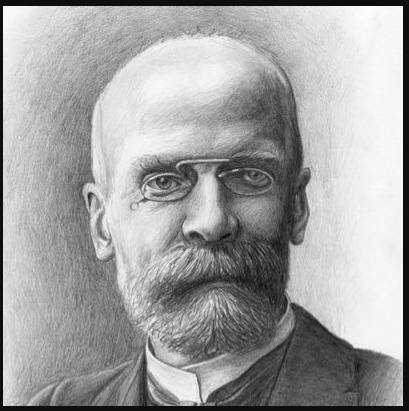

8.10 Photo of Émile Durkheim, French sociologist
8.11 Photo of Émile Durkheim teaching a course at the Sorbonne University in Paris
French social theorist Émile Durkheim (figs. 8.10 and 8.11) defined religion as a “unified system of beliefs and practices relative to sacred things.” To him, sacred meant extraordinary— something that inspired wonder and that seemed connected to the concept of the divine. Durkheim argued that religion happens in society when there is a separation between the profane – ordinary life – and the sacred. A rock, for example, isn’t sacred or profane as it exists. But if someone makes it into a headstone, or another person uses it for landscaping, it takes on different meanings—one sacred, one profane (secular).
Much of the work of Émile Durkheim stressed the functions that religion serves for society regardless of how it is practiced or of what specific religious beliefs a society favors. Durkheim’s insights continue to influence sociological thinking today on the functions of religion.
8.3.1.1 Meaning and Purpose
First, religion gives meaning and purpose to life. Many things in life are difficult to understand. That was certainly true, in prehistoric times. Even in today’s highly scientific age, much of life and death remains a mystery. Religious faith and belief help many people make sense of the things science cannot tell us. Sometimes, members of religious organizations talk about the way that faith provides meaning in their lives.
8.3.1.2 Social Unity and Stability
Second, religion reinforces social unity and stability. This was one of Durkheim’s most important insights. Religion strengthens social stability in at least two ways. First, it gives people a common set of beliefs and thus is an important agent of socialization, as we explored in Chapter 2. Second, the communal practice of religion, as in houses of worship, brings people together physically, facilitates their communication and other social interaction, and thus strengthens their social bonds. Even during COVID-19, congregants came together virtually to celebrate community.

8.12 The Golden Rule is a common principle in many religious and spiritual traditions.
8.3.1.3 Social Control
A third function of religion is related to the one just discussed. Religion is an agent of social control and thus strengthens social order. Religion teaches people moral behavior and thus helps them learn how to be good members of society. In Christianity, for example, the Golden Rule is “Do unto others as you would have them do unto you.” Many religions share this rule, written in alignment with their own cultures, as shown in figure 8.12.
8.3.1.4 Psychological and Physical Well-being
A fourth function of religion is greater psychological and physical well-being. Religious faith and practice can enhance psychological well-being. It can be a source of comfort to people in times of distress by enhancing their social interaction with others in places of worship. Many studies find that people of all ages, not just the elderly, are happier and more satisfied with their lives if they are religious. Religiosity also apparently promotes better physical health, and some studies even find that religious people tend to live longer than those who are not religious (Moberg 2008).
8.3.1.5 Motivation for Positive Social Change
A final function of religion is that it may motivate people to work for positive social change. Religion played a central role in the development of the Southern civil rights movement a few decades ago. Religious beliefs motivated Martin Luther King Jr. and other civil rights activists to risk their lives to desegregate the South. Black churches in the South also served as settings in which the civil rights movement held meetings, recruited new members, and raised money (Morris 1984).
8.3.1.6 Social Unity and Stability; Making Connections
How do these functions relate to social change? Let’s explore that question by making connections between two of these functions and social change.
When we look at the function of social connection, we notice a lack of connection in modern Western society. Our loneliness is growing. In 2018, the United Kingdom established a minister of loneliness. The purpose of this government agency is to decrease the sense of isolation that people feel. The government points to the rise in single person households, closure of community centers, and the increasing isolation of young people as factors in the problem. Similarly, researchers at Harvard talked to people about loneliness during the pandemic. They found that 36% of the adults surveyed experienced loneliness, and 43% of young adults experienced more loneliness since the outbreak of the pandemic (Weissbourd et al. 2021).
This study did not focus on the causes of loneliness. However, as you might remember though, from section “Defining Religion, Spirituality, and None.”, we are seeing an increase in people who leave the religions of their childhood, change religions, are spiritual but not religious or check the “none” box when it comes to religious affiliation. One study shows that disaffiliation, or the disconnection from a church or religion, can cause loneliness. “Americans who leave their childhood religion report more acute feelings of social isolation and disconnection. This is especially true for those who disaffiliate from more conservative faith traditions.” (Survey Center on American Life 2022:n.p.) Leaving a faith tradition means leaving the social connections and bonds of that tradition also.
When the researchers at Harvard identify solutions to the problem of loneliness, they put a religious principal at the heart of the solution:

Leaving the community of religion is not the only cause of loneliness, but it makes a difference. We’ll look at some of the ways that people are connecting in community when traditional religion doesn’t serve this function later in the chapter.
Religion also serves the function of keeping society stable, because it is an agent of social control. Social control is a way to regulate, enforce, and encourage conformity to norms both formally and informally. All religions have a holiness code, a set of core laws or principles that define the key ideas for that organization. However, religions differ in the extent to which the practitioners of that tradition must comply with the code to remain members. Many world religions vary from fundamentalist to progressive beliefs. Judaism, for example, varies from ultra-Orthodox (called Haredi Judaism) to Reform. Christianity varies from Catholicism to United and Metropolitan Community Churches. Islam varies also between Shia, Sunni, and Sufi adherents.
Sociologists and religious scholars measure the degree to which religions are legalistic, requiring believers to adhere to a strict set of rules or laws, and less legalistic where rules are interpreted in a more flexible way. Fundamentalist variations of religious traditions insist that members comply in detail with their related holiness code. In the article Fundamentalism, researcher R. Scott Appleby writes:
>….religious fundamentalists …draw lines in the sand, demand unconditional obedience from the rank and file, expend enormous energies maintaining boundaries between pure and impure, build impenetrable dogmatic fortresses around “the truth”, and see their version of it as absolute, infallible, or inerrant (Appleby 2002:16).
When you consider this definition, where can you find examples? In the United States we see Christian fundamentalism described when the media discusses differences in political views. Hindu fundamentalists support a nationalist political philosophy in India. Muslim fundamentalists insist on strict interpretations of the Koran.
Religious extremism also exists among all religions. Extremism is vocal or active opposition to fundamental values, including democracy, the rule of law, individual liberty, and mutual respect and tolerance of different faiths and beliefs. You’ll often hear extremism referred to in the media along with terrorism, even though people can be extremists in their beliefs but not be violent. You may have heard that Islamic fundamentalist were responsible for the bombing of the World Trade Center on 9/11/2001, for example. It is more correct to say that Islamic extremist terrorists committed violence.
One extreme example of religious social control is conversion therapy. In this “therapy” people who are gay are subjected to torture in an attempt to change their sexual orientation. Only some people from fundamentalist religions would agree with conversion therapy. However, this example of social control is rooted in fundamentalists beliefs. Most fundamentalist religions share the belief that God created men and women. Men and women should get married and have children, as a God given purpose.Violence against women is allowed and encouraged, if women don’t follow the rules (Derichs and Fleschenberg 2010:21).
In addition, many fundamentalist believers view homosexuality as a sin. Same sex relationships violate the God-given order. Social control uses words. In one study, the researcher found that fundamentalist church members called LGBTQIA+ people sinful, broken, and confused. LGBTQIA+ church members were threatened by eternal damnation. Social control uses shunning. True believers would refuse to associate with queer church members, saying, saying, “I couldn’t come to your wedding if you were ever married, or “I love you but I can’t support you” (Hollier et al. 2022). In extreme cases, some fundamentalist people use the social control of conversion therapy, the use of drugs, shock therapy or other aversive therapties to try to convert a gay person into a straight person. Fundamentalist use multiple methods of social control related to gender and gender identity and sexual orientation to resist social change.
Religion, then, can be a source of stability. Sometimes this is positive, creating connection and continuity. Other times, religion can be a source of resistance to health and needed social change.
8.3.1.7 Going Deeper
- This 42 minute podcast, The Meaning of Faith, explores what faith looks like in Buddhism, Christianity, Islam and Christianity. It explores how faith can work in the modern world, even by people who don’t belong to a formal religious organization.
8.3.2 Making Sense of Religion: Conflict and Social Change
Instead of focusing on the functions of religion, the idea that religion promotes connection and belonging, some sociologists focus on how religion can be a source of conflict or a motivation for change.
8.3.2.1 Weber, Marx, and Capitalism
Max Weber and Karl Marx are early sociologists who studied religion as a source of conflict and change.They each emphasized the relationship between religion and the economic or social structure of society.
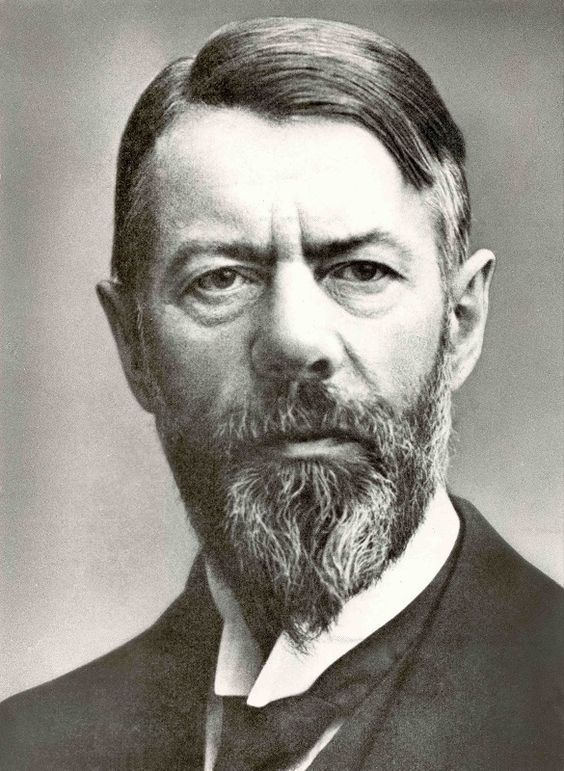

Figure 8.13 Photo of Max Weber, 1918
Figure 8.14 Photo of Max Weber at a conference in Germany, 1917
Max Weber (figs 8.13 and 8.14 ) believed religion could be a force for social change. He examined the effects of religion on economic activities and noticed that heavily Protestant societies—such as those in the Netherlands, England, Scotland, and Germany—were the most highly developed capitalist societies and that their most successful business leaders were Protestant.
In his writing The Protestant Ethic and the Spirit of Capitalism, he contends that the Protestant work ethic influenced the development of capitalism. Weber noted that certain kinds of Protestantism supported the pursuit of material gain by motivating believers to work hard, be successful, and not spend their profits on frivolous things. (The modern use of “work ethic” comes directly from Weber’s Protestant ethic, although it has now lost its religious connotations.)xxx
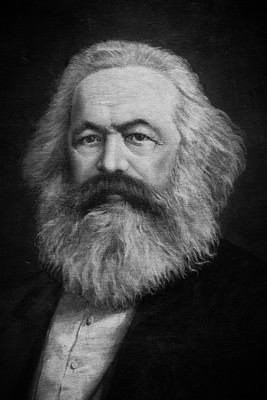

Figure 8.15 Photo of Karl Marx (1818-1883)
Figure 8.16 Karl Marx (center) in a mural by Diego Rivera, pointing the way for Mexican laborers and revolutionaries toward independence
Karl Marx (Figure 8.15 and 8.16) viewed religion as a tool used by capitalist societies to perpetuate inequality. He believed religion reflects the social stratification of society and that it maintains inequality and perpetuates the status quo. For him, religion was just an extension of working-class (proletariat) economic suffering. He famously argued that religion “is the opium of the people”.
Sociologists that expand on Marx’s work are called conflict theorists. When they study religion, they are critical of the way many religions promote the idea that believers should be satisfied with existing circumstances because they are divinely ordained, or decreed by God.
This power dynamic has been used by some Christian institutions for centuries to keep poor people poor and to maintain a labor force. This is accomplished by teaching them that they shouldn’t be concerned with what they lack and how hard they are required to work because their “true” reward will come after death. Conflict theorists also point out that those in power in a religion are often able to dictate practices, rituals, and beliefs through their interpretation of religious texts or via proclaimed direct communication from the divine. Because people in power want to retain their power, they emphasize religious practices that support their own power.
8.3.2.2 Liberation Theology
One example of applying conflict theory actually turns Marx’s idea of religion on its head. Religion becomes a force for social change, instead of social control. Instead of being “the opiate of the masses”, Liberation Theology is a force for social change.
Liberation Theology is a religious movement that combines Christian principles with political activism to enact social change. This theology grew out of Vatican II, a huge conference of Roman Catholic leaders in 1965. In this Council, the Pope, who is the leader of the church, made reforms that centered everyday people, particularly poor people.
For example, the Pope changed the rules so that Mass could be celebrated in everyday language instead of in Latin. The altar was turned, so that priests faced the people, and spoke directly to them. The council also added more biblical texts into the Mass, and encouraged people to read the Bible.
At the same time, social scientists were exploring how colonialism worked historically and economically. They were asserting that people in the Global South, in particular, were becoming poorer, and the people of the Global North were exploiting them to get richer. Theorists in Latin America were linking poverty and historical dependency to explain economic inequality.
Some of the priests and lay leaders in Latin America turned this into a theology and social activism that said that it was holy to work to create a more just society. One person who worked to protect the poor was St. Oscar Romero. Although he may not have called himself a liberation theologist, he used his beliefs to create change. Romero lived in El Salvador. He tried to stop the Salvadoran Civil War (1979-1992). He told the people in the government to protect the poor in the country, rather than siding with the wealthy people. He used his religious beliefs to speak out against inequality. One day before his assassination, he said:
I want to make a special appeal to soldiers, national guardsmen, and policemen: each of you is one of us. The peasants you kill are your own brothers and sisters. When you hear a man telling you to kill, remember God’s words, ‘thou shalt not kill.’ No soldier is obliged to obey a law contrary to the law of God. In the name of God, in the name of our tormented people, I beseech you, I implore you; in the name of God I command you to stop the repression. (Romero, quoted in Garsd 2013:n.p)
St. Oscar Romero was nominated for a Nobel Peace prize in 1979, and canonized as a saint by the Catholic Church in 2018.
More importantly than an individual person/saint, we see that religion itself, by championing countercultural messages, and standing up for people who have been oppressed can become a force for social change.
8.3.3 Making Sense of Religion: Religion is in the Doing
Rising from the concept that our world is socially constructed, symbolic interactionism studies the symbols and interactions of everyday life. To interactionists, beliefs and experiences are not sacred unless individuals in a society regard them as sacred. You might remember seeing an infographic of religious symbols in our section “Diversity of World Religions”. Among other symbols, the Star of David in Judaism, the cross in Christianity, and the crescent and star in Islam are examples of sacred symbols.
Interactionists are interested in what these symbols communicate. Because interactionists study one-on-one, everyday interactions between individuals, a scholar using this approach might ask questions focused on this dynamic. The interaction between religious leaders and practitioners, the role of religion in the ordinary components of everyday life, and the ways people express religious values in social interactions—all might be topics of study to an interactionist.
8.3.4 Making Sense of Religion: Feminist Sociology of Religion
Feminists sociologists and religious scholars present a different lens through which to examine religion. Women have always participated in religious rites and rituals. Some of the earliest religious icons we have found are female. They are small figures, carved of limestone or formed from clay, which highlight the female breasts, pregnant stomachs and thighs, as seen in figure 8.17. However, in most world religions today, the leaders are men. (Gross 2001).
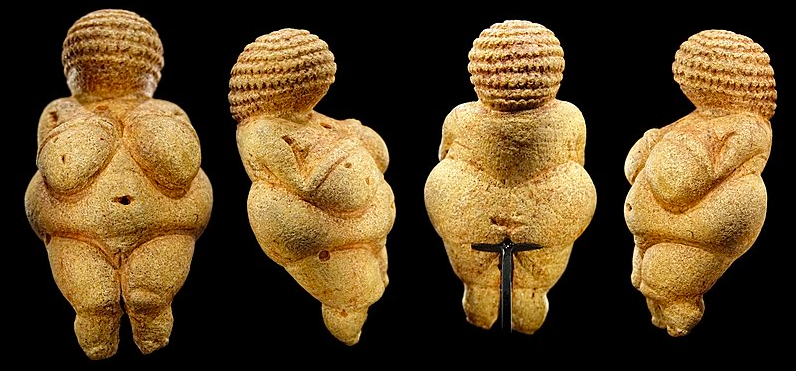
Figure 8.17 Photo of The Venus of Willendorf
Feminists sociologists of religion examine why gender makes a difference in religious institutions and spiritual practices. They argue that the institution of religion, because it is led primarily by men, is one of the institutions that supports patriarchy, a system in which men dominate women and have power and authority. We can look at how religion maintains the power of men, or shifts the power balance along four dimensions: belief, language, leadership and activism.
8.3.4.1 Beliefs
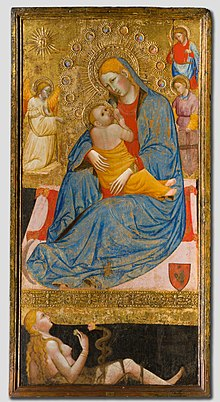
Figure 8.18 The Madonna of Humility with the Temptation of Eve painting by Olivuccio di Ciccarello.
Feminist sociologists and anthropologists study the ways in which religious and spiritual teachings help us to define our ideas of gender, and to assign power and agency to particular genders. In some traditions, women have been seen as either madonnas or whores – either pure, innocent and close to God, or sexual, sinful and dangerous to men. Please take a moment to examine the painting in figure 8.18. What do you see?
In this painting, by Italian Olivuccio de Ciccarello sometime around 1400, we see the focus of the painting on the Virgin Mary and the infant Jesus. They are surrounded with gold and by angels. At the bottom of the painting we see Eve, wrapped in a snake, and naked. This combination of figures represents two images of women in some world religions.
In example from Islam, beliefs about gender create separate spaces for women and men. Scholar Line Nyhagen writes, “Hegemonic Islamic norms dictate the separation of women and men during prayer due to women’s childbearing role and a perceived need to control male sexual lust. (2019: n.p.)”.
Although focus on a gender binary is common in religion, it is not the only set of beliefs about gender identity and gender roles. Some religious traditions access more fluid understandings of gender roles. For example, some Indigenous traditions recognize two-spirit people – shamans or ordinary people who live outside of the Western-created boundaries of binary gender identity and sexual orientation. Watch the 6:16-minute video “What Does Two-Spirit Mean?” for a description of this experience (figure 8.19).
Figure 8.19 What Does “Two-Spirit” Mean? | InQueery | them. [YouTube Video]
If we look at Hinduism, we find that the Hindu Deity Ardhanarishvara is half man and half woman (figure 8.20). By bringing together male and female energy, Ardhanarishvara unifies the opposites of the universe, including gender. (Raveesh 2013). Xxx
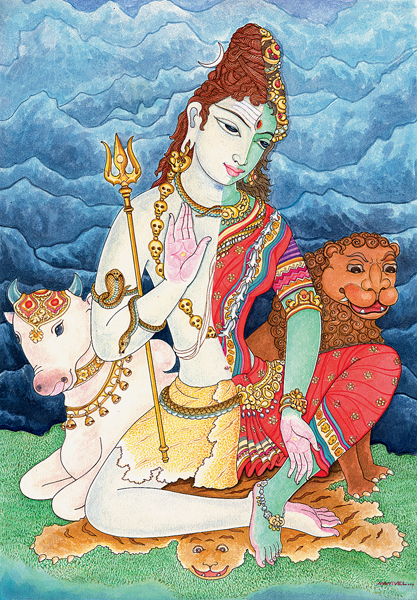
Figure 8.20 Image of the Hindu Deity Ardhanarishvara
8.3.4.2 Language
Feminist sociologist look at language as a way to socially construct gender and gendered power. When they apply these principles to religion, the most obvious example is that the supreme deity or God is referred to as male, he, or lord. This language is common in the major world religions, and it has consequences. Feminist theologian, former Catholic nun and lesbian, Mary Daley point out that when religions refer to God as male, then power becomes centralised with men. She writes, “If God is male then male is God. (Daly 1985:19)”
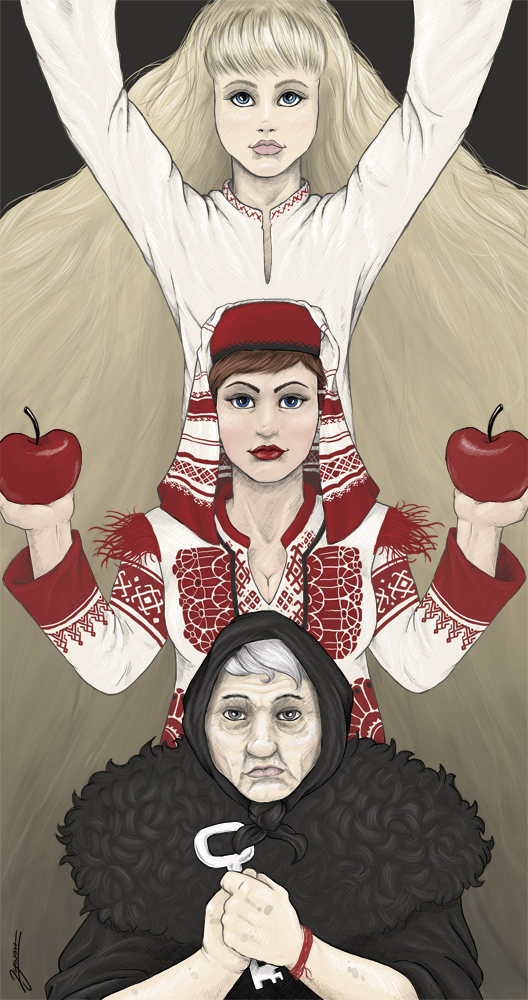
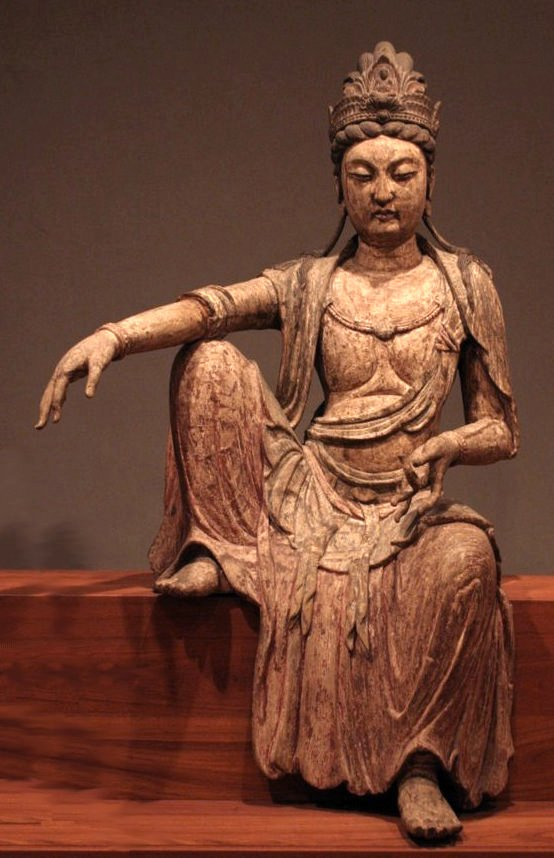

Figure 8.21a Mother Maiden Crone Triple Allmother
Figure 8.21b Wood carving of Quan Yin (c. 1025) from the Northern Song dynasty, China
Figure 8.21c Kids play football in front of a Pachamama mural in Medellín, Colombia.
However, this is far from the only languaging about God or spirit. In Judaism, Shekinah, the Sabbath itself is female, compared to a shy bride. Wiccan traditions venerate the Goddess as mother, maiden and crone in addition to any male figures. St Julian of Norwich a Catholic mystic nun, calls God a mother. Buddhists call upon Quan Yin, the goddess of compassion, who hears the cries of the poor. Pachamama is an “Earth Mother” and fertility goddess of indigenous people in the Andes. Pachamama is also a name for Mother Nature (figure set 8.21a-c). As feminists scholars and activists are excavating our histories and reimagining our futures the language of the divine becomes more feminine. And the work doesn’t stop here.
Marley, a transgender person who is Episcopalian is creative in how they use language and gender to express their understanding of God:
My practice entails reimagining the gendered significance of the Holy Trinity: I use male pronouns for Jesus and I use female pronouns for the Holy Spirit. And just God for God. So, like, in “Blessed Be” there’s one bit in the liturgy where it’s, “And Blessed Be His kingdom, now and forever.” I say, “And Blessed Be God’s Kingdom, now and forever.” […] “She” for the Holy Spirit is not as common but it’s growing in popularity in order to have a sort of tri-part type binary in a non-binary God, who is both mother and father. The male son, Jesus, and the female, Spirit. Which is interesting and its own sort of thing, and I love that. Marley uses “he” to refer to Jesus, “she” to refer to the Holy Spirit, and “God” to refer to “God.” Rather than conceptualize this trinity as a heteronormative family unit, however, Marley understands this system to represent a nonbinary God who is comprised of both male and female parts (Darwin 2020).
Although using male language to refer to the divine is both common and privileged, it is far from the only language that works. xxx
8.3.4.3 Leadership
In her book “Priestess, Mother, Sacred Sister: Religions Dominated by Women” sociologist Susan Sered writes:
Ethnographic and historical studies of women and religion have thoroughly documented patterns of women’s exclusion from positions of significant religious leadership. In many societies women have active religious lives, yet ecclesiastic hierarchies rarely include women (Sered 1994:3).
We can find several examples that support this claim. In Catholicism even today, only men can be priests. Many Muslims assert that women should be led by female imams (worship leaders) only. The first woman to be formally ordained as a Jewish rabbi by a rabbinical seminary was Sally Priesand in 1972. Until recently, Buddhist nuns were prohibited from being fully ordained. Our religious institutions reflect and amplify patriarchal ideas, limiting women from leadership and power. To the extent that these structures remain in place, they resist social change.
And yet, this story is still being written. In 2019 religion scholar and mystic Miribai Starr said it this way:
Women do not always feel comfy inside traditional religious institutions. That’s probably because the architecture of the world’s organized religions and the furniture with which they are appointed have been designed largely by and for men. These structures are built to fit and uphold a male-dominated paradigm.
Starr adds to the story, however, and shares changes she is seeing with this male-dominated paradigm:
>Across the faith traditions women are being initiated, ordained and sanctioned as rabbis and acharyas, priests and priestesses, ministers and murshidas, lamas and shamans. We are disrupting the balance of power and reorganizing the conversation. Increasing numbers of men, secure in their positions of privilege and authority, are voluntarily abdicating their power and handing it over to women, calling God “she” from the pulpit, seeding the academy with female philosophers. The alienation of the feminine is as obvious to them – and as perilous – as it is to women who have been historically excluded from positions of leadership. (Starr 2019:3)
Please take a couple of minutes to view this slideshow: Powerful Women Religions Leaders From Around the World. As you watch, consider which geographies, faith traditions and social locations are being represented.
As women, transgender, and non-binary people become leaders in religious and spiritual traditions, they are creating the social change they wish to see for themselves and for others.
8.3.4.4 Activism
Finally, when we consider gender, religion and social change, we look at women, transgender and non-binary people who use religious and spiritual principles as a foundation for their activism. Valerie Kaur is a Yale lawyer, civil rights activist and Sikh. After 9/11, members of her extended family and other Sikhs and Muslims were killed in hate crimes, only because they wore turbans. She dedicated herself to learning more about these killings, and articulating alternatives to hate.
In her childhood, when she experienced hate, her grandfather repeated this mantra three times with her: Tati Vao Na Lagi, Par Brahm Sarnia – The hot winds cannot touch you, you are shielded by love (Kaur 2020:13). In this practice, she gained both protection and fierceness.
As a mother and activist, she offers a different metaphor for activism. Often social activism focuses on conflict and the power of one group to control another. In this approach Kuar calls for revolutionary love, like a fierce mother, to transform our world. As you watch this video in figure 8.22, please consider how this story is different. How is this different because it uses birth, labor, and love as power? How is it different because it is told by a person of color using Sikh stories? The whole video is 22:12 minutes long.
Figure 8.22 3 lessons of revolutionary love in a time of rage | Valarie Kaur [YouTube Video]
Her project, the Revolutionary Love Project, integrates the power of her faith and the strength of her commitment to love to transform the world. She adds the feminist idea of loving yourself to the messages of non-violence from Gandhi and King to articulate transformative power.
8.3.4.5 Going Deeper
- To learn more about St. Oscar Romero: Oscar Romero, from the Oscar Romero Trust
- The story of St. Romero, told by CAFOD, the Catholic Agency For Overseas Development, in England and Wales. If you would like to listen in Spanish, here is another version of the story from the same agency in Spanish.
8.3.5 Making Sense of Religion: Race and Ethnicity
As powerful as feminist vision and feminist action is in creating social change in religion and in the world, some of the early work in this area was also racially biased in its approach. Indeed, when we consider race, ethnicity and religion we find that religion and spirituality both contribute to biased ideas and structures, and can be used to change them. To look deeper, we will examine racial bias in feminist religious scholarship and cultural appropriation.
8.3.5.1 Racial Bias in feminist religious scholarship
Feminism in general is rightly criticised because it often focuses on the experiences of White women, and asserts that their experience is universal. For example, former slave, abolitionist and women’s rights activistSojurner Truth gave a speech entitled “Ain’t I a Woman” at a Ohio Women’s Rights convention in 1851. White women were asking for equal rights, particularly the right to vote. They were fighting against stereotypes that women were weak, delicate and unable to reason. In response, Sojourner Truth reminded her audience that she lives another version of womanhood than was being discussed. Her version was one in which Black slave women were as strong as any man, expected to plow and sow, just like any man (Truth 1851 as quoted in Podell n.d.).
This blindness to the experiences outside of White society appears in early feminist scholarship of religion also. For example, Audre Lorde, a writer, radial feminist, professor and civil rights activist critiques the writing of Mary Daly. In Daly’s book Gyn/Ecology, she explores patriarchy and the power of women’s spirituality. However, she generalizes her concepts to all women, when in fact, her models are limited to western European goddesses. Audre Lorde calls her to task for this, writing:
When I started reading Gyn/Ecology, I was truly excited by the vision behind your words and nodded my head as you spoke in your First Passage of myth and mystification. Your words on the nature and function of the Goddess, …agreed with what I myself have discovered in my searches through African myth/legend/ religion for the true nature of old female power.
So I wondered, why doesn’t Mary deal with Afrekete as an example? Why are her goddess images only white, western european, judea—christian? Where was Afrekete, Yemanje, Oyo, and Mawulisa? Where were the warrior goddesses of the Vodun, the Dahomeian Amazons and the warrior—women of Dan?…. I feel you do celebrate differences between white women as a creative force toward change, rather than a reason for misunderstanding and separation. But you fail to recognize that, as women, those differences expose all women to various forms. and degrees of patriarchal oppression, some of which we share and some of which we do not.

Figure 8.23 Images of Yemanje (Yemaya) Mother of all Orishas, Goddess of the Sea
Lorde refers to the orishas Yemanja (fig 8.23) and Oyo in the Youruba religious tradition, Afrekete, guardian goddess of the sea, Mawalisa, creator goddess and women warriors of the Dahomey tribe in West Africa. All of these women and goddesses embody the power of the feminine in African traditions. They are missing from Daly’s scholarship.
In more current scholarship, scholar Oyeronke Olajubu argues that Yoruba ideas of gender are significantly different from Western ideas. They are more fluid and more complementary than western concepts of gender. She writes, “My investigation reveals that women play important roles in the Yoruba religious tradition, but this fact has often been subsumed under male-focused interpretations. There is, in addition, an emphasis in the society on the interdependence of male and female, a recognition of which is necessary for any meaningful evaluation of Yoruba religious tradition” (Olajubu 2004:60).
8.3.5.2 Cultural appropriation
Beyond the racial bias embedded in religious scholarship, there exists stereotyping and cultural exploitation of spiritual and religious practices. Have you ever chosen your spirit animal? Have you ever used sage to clear your space? Have you ever dressed up as La Catrina for Day of the Dead? Have you carved a totem pole? If you are an Indigenous or Latino/a/x person, these actions may be sacred rituals that connect you to the divine, your community, ancestors, and to all of life. If you are White, it’s possible that partaking in these practices may be seen as appreciation. It also may be seen as appropriating the spiritual traditions of other people.
Cultural appropriation is the unacknowledged or inappropriate adoption of the customs, practices, ideas, etc. of one people or society by members of another and typically more dominant people or society. It can occur in all aspects of life, from wearing dreadlocks to dressing as Pocohontes for Halloween. But this practice becomes even more insensitive when it comes to religious rituals and ceremonies. In these cases, White people might carve a totem pole, a practice sacred to the Indigenous peoples of the Pacific Northwest, just because they like it. (Trujillo Dalbey 2017) They may lead a sweat lodge without training or authorization from an indigenous elder or knowledge keeper. They may burn some sage or hang a crystal without understanding the cultural significance or spiritual power of such an action.
Part of being sensitive to cultural appropriation includes taking into account that the spiritual practices of Indigenous and other oppressed people around the world have been forbidden, punished or destroyed by European colonizers. In the words of anti-racist scholar Robin DiAngelo, “I am critiquing the particular romanticized consumption of traditional practices by white consumers in ways that essentialise Indigenous peoples and are not accountable to the impact of their consumption. (DiAngelo 2021: 117, italics in the original).” In other words, White people can essentialize Indigenous people, simplifying their complex experience by thinking that they are uniquely more in touch with nature, more spiritual, or more connected. Then, they can consume this ideology, and the related practices, without being aware of the harm they are doing. This is racism at work in the guise of spirituality, continuing toxic patterns of the past, rather than changing them.
When we consider religion and spirituality, we see a complex landscape. Sociologists, religious scholars, and activists note that religion can be a source of social stability. It can be a set of beliefs that dull people to the reality of their oppression. It can continue traditions of gender and racial inequality. And it can be a strong force for the transformation of society. Which explanation is most compelling for you?
8.3.6 Licenses and Attributions for Race, Ethnicity, and Sociology of Religion
8.10 Photo of Émile Durkheim, French sociologist
8.11 Photo of Émile Durkheim teaching a course at the Sorbonne University in Paris
8.12 The Golden Rule (c) Paul McKenna. All rights reserved. Used with permission
8.3.1 Paragraphs on functions of religion https://open.lib.umn.edu/sociology/chapter/17-3-sociological-perspectives-on-religion/#:~:text=Religion%20serves%20several%20functions%20for,work%20for%20positive%20social%20change. (CC BY-NC-SA)
8.2.3 World Religions: the Spirit Searching by Jody L Ondich is licensed under a Creative Commons Attribution-NonCommercial-ShareAlike 4.0 International License,
3 approaches https://openstax.org/books/introduction-sociology-3e/pages/15-1-the-sociological-approach-to-religion
Types of religious organizations Jody Ondich adapted 2e – 3e source: https://openstax.org/books/introduction-sociology-3e/pages/15-2-world-religions
Figure 8.13 Photo of Max Weber, 1918
Figure 8.14 Photo of Max Weber at a conference in Germany, 1917
Figure 8.15 Photo of Karl Marx (1818-1883)
Figure 8.16 Karl Marx (center) in a mural by Diego Rivera, pointing the way for Mexican laborers and revolutionaries toward independence
Figure 8.17 The story of St. Romero
Figure 8.18 Photo of The Venus of Willendorf
Figure 8.19 The Madonna of Humility with the Temptation of Eve painting by Olivuccio di Ciccarello. Public Domain
Figure 8.20 Title of Video: What Does “Two-Spirit” Mean?
Figure 8.21 Image of the Hindu Deity Ardhanarishvara Copyrighted to Himalayan Academy Publications, Kapaa, Kauai, Hawaii. Licensed for Wikipedia under Creative Commons Share Alike 2.5 and requires attribution when reproduced.
Figure 8.22a Mother Maiden Crone Triple Allmother
Figure 8.22b Wood carving of Quan Yin (c. 1025) from the Northern Song dynasty, China
Figure 8.22c Kids play football in front of a Pachamama mural in Medellín, Colombia.
Figure 8.23 Title of Video: Three Lessons of Revolutionary Love in a Time of Rage, Valerie Kaur
Figure 8.24 Images of Yemanje (Yemaya) Mother of all Orishas, Goddess of the Sea
